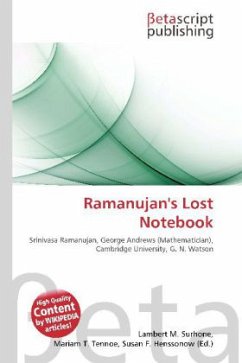Please note that the content of this book primarily consists of articles available from Wikipedia or other free sources online. In number theory, a branch of mathematics, Ramanujan''s sum, usually denoted cq(n), is a function of two positive integer variables q and n defined by the formula c_q(n)= sum_{a=1atop (a,q)=1}^q e^{2 pi i tfrac{a}{q} n} ,where (a, q) = 1 means that a only takes on values coprime to q.Srinivasa Ramanujan introduced the sums in a 1918 paper. In addition to the expansions discussed in this article, Ramanujan''s sums are used in the proof of Vinogradov''s theorem that every sufficiently-large odd number is the sum of three primes.
Bitte wählen Sie Ihr Anliegen aus.
Rechnungen
Retourenschein anfordern
Bestellstatus
Storno








